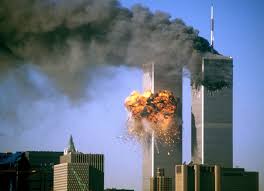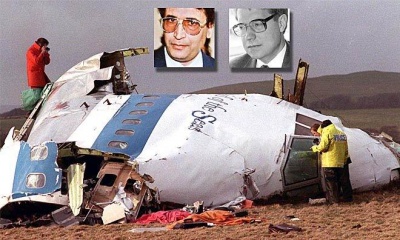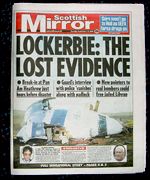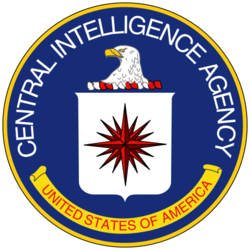User:Patrick Haseldine/Suppressed Lockerbie evidence ignited 9-11 attacks
 | |
| Date | 11 September 2001 08:46 - 11 September 2001 10:28 |
|---|---|
| Location | Manhattan, New York City; Arlington County, Virginia; near Shanksville, Pennsylvania |
| Blamed on | al-Qaeda |
| Type | suicide attacks by plane hijackers |
| Deaths | 2,996 (2,977 victims + 19 hijackers)"(2,977victims+19hijackers)" can not be assigned to a declared number type with value 2996. |
| Injured (non-fatal) | 6,000+"+" can not be assigned to a declared number type with value 6000. |
9/11, in addition to being a unique, highly coordinated and meticulously planned act of aggression, constituted a media event on a scale not seen since the advent of civilian global satellite links, round-the-clock television news organisations and the instant worldwide reaction and debate made possible by the Internet. As a result, most of the events listed in the 9/11 timeline below were known by a large portion of the planet's population as they occurred.
Until Tuesday 11 September 2001, the world had recognised the bombing of Pan Am Flight 103 at Lockerbie in Scotland on 21 December 1988 as the worst terrorist attack against the USA: of its 270 fatalities, 189 were American. On 11 September 2001, important Lockerbie evidence that had been suppressed for over twelve years, finally entered the public domain. That evidence by security guard Ray Manly concerned a break-in at Heathrow airport hours before Pan Am Flight 103 took off and exploded over Lockerbie:
- "A terrorist who wanted to put a bomb on that plane would have gained access to the perfect place. The luggage would not be checked again before being loaded on the plane. Although police took a statement, I never heard from anyone afterwards."[1]
Ray Manly, who died in 2010, was described by the Lockerbie Divide website as the epic whistleblower whose actions dredged up perhaps the key piece to the puzzle of the 1988 Lockerbie bombing:
- "The same clue had been erased from the record early on by authorities, and kept from the world for over a decade. That long silence ended for good with his clue’s first publication in the news, nearly eight months after Abdelbaset al-Megrahi’s conviction for his plot on Malta.
- "This came on Tuesday, 11 September 2001, and it was obviously superseded by events overseas. A new record was set that day - by a landslide - for American civilians killed in a terrorist attack (2,977). But the explosive power of Manly’s revelation to understanding the previous record-holder, also involving an airliner, was not diminished.
- "Patrolling Heathrow’s terminal three shortly after midnight on 21 December 1988, he had discovered a padlock that had been cut on a certain door called T3/2A. This had left open the way to the usually-secured airside area, where luggage is loaded onto airliners. He dutifully reported this to his superiors, but apparently nothing further was done, and about 17 hours later, Pan Am 103 was loaded with a bomb at terminal three.
- "Somehow the fact of this breach never emerged during the investigation, as attention turned first to Germany, and then to Malta. For years it remained unknown, up to and even at the Lockerbie bombing trial in 2000. There, Megrahi’s defence tried to argue for a bomb introduction at Heathrow, based on other compelling evidence. But they were as clueless as anyone that there was also a reported break-in at the airport, almost a smoking gun in that context.
- "Manly says the memory remained with and 'weighed' on him over the years, and when it still hadn’t come up as of the wrongful verdict at the end of January 2001, he contacted al-Megrahi’s defence team and, later, the media."[2]
Abdelbaset al-Megrahi's appeal against his Pan Am Flight 103 conviction was scheduled to be heard at Camp Zeist in the Netherlands in January 2002. Armed with Ray Manly's Heathrow break-in evidence, the Libyan's conviction would undoubtedly be overturned. More importantly, Libya would be exonerated from the crime of Lockerbie and the UN sanctions imposed a decade earlier would have to be lifted.[3] Faced with this dreadful prospect, the UK/US authorities had to do something dramatic, even world-shaking, to ensure the innocent "Lockerbie bomber" remained convicted. The eventual 9/11 highly coordinated and meticulously planned act of aggression would have been hatched in March or April 2001 soon after Ray Manly told the Scottish authorities he intended to testify on Megrahi's behalf.
Suddenly, on 11 September 2001, the Heathrow break-in evidence made front page news in a Scottish Mirror exclusive ("Lockerbie: The Lost Evidence"). Other newspapers also carried the story on 11 September 2001 including The Independent.[4] A BBC News report "Key Lockerbie 'evidence' not used" published at 08:42 a.m. (GMT) on Tuesday 11 September 2001 was broadcast worldwide. According to former British diplomat Patrick Haseldine, it was this BBC News report about the suppressed Lockerbie evidence that ignited the 9/11 attacks – see 9/11 timeline 05:00 a.m. (below).[5]
Which raises the question: "Was the CIA complicit in both the Lockerbie and 9/11 attacks?"


